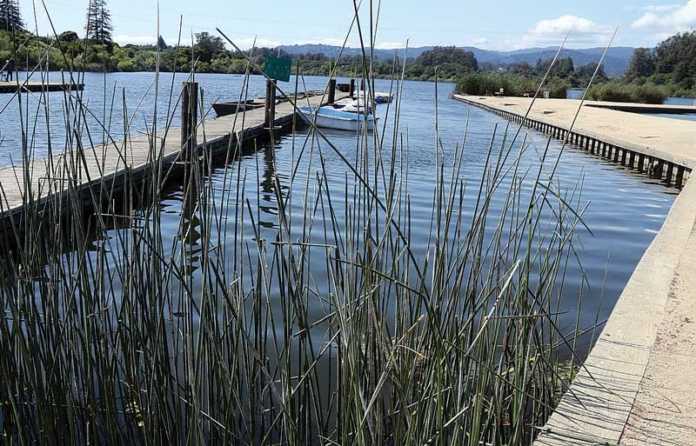WATSONVILLE — Recent efforts to clean Pinto Lake have been largely successful, with harmful algae blooms drastically reduced, and no closures for more than a year.
Watsonville officials closed the lake several times since 2015 due to concerns over toxins in the water.
But the success does not mean that the lake’s problems are over, Watsonville Environmental Projects Manager Jackie McCloud said.
Residents can still do their part to keep the lake healthy, she said.
The reduction of dangerous algae in Pinto Lake was the end-result of a project that began in 2015 when scientists saw high concentrations of microcystin, a toxin caused by cyanobacteria, which is commonly called blue-green algae.
Blooms of this bacteria are caused by phosphates that come from agricultural practices. They also come from residential uses and from riverbank erosion. Microcystin is harmful to people and animals.
The two-phase project to clean the lake began in 2016, when the city’s environmental scientists turned their attention to the tributaries feeding the lake, which carry sediment from upstream that feed the bacteria and allow it to thrive.
This included adding control measures such as rolling dips and detention basins that have reduced 100 percent of the sediment entering the lake by those means, McCloud said.
The second phase began in 2017 when city officials added aluminum hydroxide to the water. That chemical binds onto the phosphates that feed the algae to the water, thus reducing the harmful bacteria.
A report released Wednesday details the work that went into the project, and shows that harmful algal blooms were reduced by 90 percent in the lake.
Better still, Watsonville officials have not had to close the lake this year, McCloud said.
“The report is the finalization of three years of work,” she said.
Now, Watsonville officials are hoping that residents who live near the lake will do their part to help keep it clean.
“The alum treatment did exactly what we wanted, but over time the efficacy will go down,” she said.
Among other things, residents should make sure their septic systems are in good working condition, and that they are not fertilizing gardens and lawns before rains.
Techniques such as planting strips of grass next to streams and applying fertilizer using precision methods can also cut water pollution from farms.
The lake is not yet safe for swimming, and anglers are warned that fish from the lake are not safe to eat. Those activities could be years off, McCloud said.
Still, the project helped clean the lake, which two years ago was closed due to the amount of toxins in the water.
“This is the first step,” she said. “We were really able to do something to improve water quality.”
•••
To see the report, visit bit.ly/2uKR4nJ. For information on erosion and runoff control, visit bit.ly/1udnuhb.













